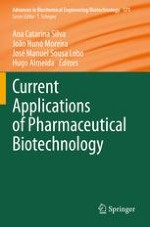2020 | OriginalPaper | Buchkapitel
Insights on the Formulation of Recombinant Proteins
verfasst von : Rita Ribeiro, Teresa Raquel Abreu, Ana Catarina Silva, João Gonçalves, João Nuno Moreira
Erschienen in: Current Applications of Pharmaceutical Biotechnology
Verlag: Springer International Publishing
Aktivieren Sie unsere intelligente Suche, um passende Fachinhalte oder Patente zu finden.
Wählen Sie Textabschnitte aus um mit Künstlicher Intelligenz passenden Patente zu finden. powered by
Markieren Sie Textabschnitte, um KI-gestützt weitere passende Inhalte zu finden. powered by
